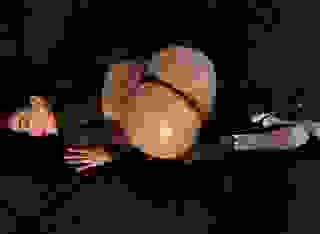- Sci-Fi & Fantasy
- Space Wrecker
Note: You can change font size, font face, and turn on dark mode by clicking the "A" icon tab in the Story Info Box.
You can temporarily switch back to a Classic Literotica® experience during our ongoing public Beta testing. Please consider leaving feedback on issues you experience or suggest improvements.
Click hereSpace Wrecker
A little story that haunted me over the x-mas holiday trail ride. Thank you Taco1085 for editing this stuff. All mistakes are mine.
"Space Station Brigg's this is Back Water recovery, wrecker U.N. Galveston passing early warning sentry post 1156. Please respond."
I sat back and waited for the Sub-gamma repeaters on the EWSP's relaying my message the ninety-one million miles, or the eight light minutes to the space station. I checked the readouts on the four bolted on FTL drives on the battleship UNN Sri Lanka. They were already at normal temp from the FTL jump and the long slow down to inner galactic speed limits.
They were good to go for me to fire up their sub-light drive if I needed to change course or speed. It took me nearly nine days to attach the four drives to her battered hull. And another twenty hours pulling her seven hundred and fifty-five million tons up to speed before I could engage the FTL's for the first jump.
As soon as I came back into normal space, I decoupled and allowed its dead weight to pass me and re-coupled to her on a stern receptor plate. I had to mount a temporary receptor plate to the back of her hull. The Sri Lanka's primary drive and exhaust cones had taken several rounds from a big railgun. The entire area around the ships' rear coupler and exhaust ports was a mess.
I did not think it would have taken the stress of deceleration, so I had to have the drones weld on mounting brackets for the receptor plate. For the last ten hours, my wrecker's primary drive has been in reverse, slowing her down to just under four hundred and seventy-five thousand miles per hour, inner system max speed.
I normally do not retrieve military hardware, but the United Nations Navy Admiralty had opened up the battlefield around Kazar II to any licensed deep space recovery ships. Most of the independents and nearly all the corporate crews have been shying away from this contract, since technically we were still at war with the Felidae people. The contract stated that there would be no military protection squads in the area to provide civilian protection. We only have a verbal truce with the cats'. So they still considered Kazar II an active war zone.
But as my old boss used to say, a missed tow is a missed payday. So I paid the Navy's registration fee and turned the Galveston towards the Kazar system. I was first on the scene. Both sides were still recovering personnel from the damaged battleships and cruisers. I have never seen one of the cat's battleships in person, just pictures.
They were just as big as the UNN's ships of the line. Boasting rail guns and torpedo tubes along both sides of her hull. The first one I passed looked a mess. It looked like something hit the reactor and sent it critical. It split her in two and was still leaking radiation. I gave her a wide berth. The second one looked good enough to salvage.
When I arrived, the Carrier UNN New Zealand was on site directing the recovery efforts. Since I was the first contractor on scene, they asked me to pull several ships into a docking formation. With notes on hook up fees and towing sent to the admiralty for my work, these were simple nose to tail hook ups. They gave me the prize of the battlefield, the battleship UNN Sri Lanka.
Her hull and fusion reactors were intact. Three of her nine main rail guns were missing, and her primary drive was nonfunctional. However, she was salvageable, so the admiralty definitely wanted her back in dry dock ASAP. I circled her hull three times, running scans to make sure she wouldn't break up on me in transit. After the engineering software confirmed she was solid.
It pinpointed my attachment points, and I programmed my drones to attach hard points to her hull for the small bolt on FTL, thrusters. I used most of my store of Plasti-steel temp-plating and meg clamps to hold down some of the loose stuff and cover the worst of her holes. Best not to allow some micro particle of dust to get sucked into a hole and compromise her reactor when we were in FLT. She looked bad, but from what I was told, she was still fighting at the end of the battle, dead in space, but all guns still blazing.
The carrier UNN New Zealand was still on scene when I finally hooked up the FTL drives to the Galveston's main reactor and started pulling the battleship towards dry dock.
"U.N. Galveston, this is Space Station Brigg's. State the nature of your visit?"
"Space Station Brigg's, this is U.N. Galveston. The Galveston is under contract to recover all salvageable ships from the Kazar offensive. Currently bringing in the battleship UNN Sri Lanka. Please advise."
I hit the switch on the command seat and slid it back. Then got up and headed into the living area and galley. The Miller 'M' five thousand wrecker had little living area, only about twenty-five hundred square feet, not a lot for a ship her size. The Galveston itself tipped the scales at a little over a hundred million tons. She was only about six hundred feet long, and a hundred and sixty wide.
But she boasted a reactor sized for a battleship and dual Cummins seven-fifty FTL thrusters, the same ones powering those U.N.N. Carriers. She also boasted eighteen EVA anti-grav thrusters for bringing in large commercial ships' planet side. Not that it happens very much. They did most repairs in orbiting dry docks. I landed a few hulls for their final disassembly. It is always a sad day, when you land a spacer, planet side for the scrap yards.
They automated most of the ship's storage compartments, and one huge hanger for the fleet of drones. The drones did most of the dangerous work. The Galveston had four massive boom arms when I needed to pull ships apart, with a dozen different attachment heads to either cut or hold a ship while doing a recovery.
I walked into the galley and pulled a twenty-ounce tumbler out and hit the dispenser for a glass of water. What I really needed was a strong cup of coffee or eight hours in bed, I do not think I have gotten over four hours of straight sleep in the last nine days.
They designed the Galveston for a three-man crew working eight-hour shifts, but I am too demanding about other wrecker pilots, and too cheap to hire one or two of the better ones. Plus, I loved the peace of not having other crew members.
It reminded me of the hours driving combines on my parent's farm back on Epsilon four. My parents own a hundred thousand acre farm near the town of Back Water on Epsilon four. The farms industrial combine's harvested acres at a time. They shipped ninety-nine percent of their harvest off world to feed the inner planets of the United Nations.
The harvesters, plows, and seeders nearly drove themselves, but still needed a driver to 'ok' certain drive parameters. That left the driver, a lot of time to just sit and think, or in my case, just stare at the stars.
I took my water back to the command center, thinking about my parents and the farm. Before the wheat blight on Epsilon prime and one, my father couldn't afford to upgrade the harvesters and plowing tractors. They were constantly breaking down and always seemed to happen a hundred miles from the barns or a mobile repair hut. Dad always ended up calling Old man Harrison and his wrecker to come retrieve the combine from the middle of the fields.
I learned how to handle the rigging the first couple of times he came to pull the harvester or plow tractors out of the field. After he was comfortable with just me handling the rigging, he would call for me to assist him on other jobs since he said he was getting older and slower to be crawling around some tractor planet side.
Soon I was working for him full time, pulling equipment out of the field's planet side, or helping him tow in spacers that broke down in our solar system. He helped me get my pilot licenses when I turned sixteen and my first of many commercial endorsements at eighteen and my full commercial endorsement at twenty one. I had been pulling in broken down junk for Mr. Harrison for six years when I saved enough to go to earth to attend a vocational school for deep space wrecker training.
"U.N. Galveston, this is Space Station Brigg's, we have your ship's transponder on radar and the UNN Sri Lanka's. Please maintain current course and speed. In forty-eight hours an escort will meet you to escort you in. Docking instruction to follow."
"Space Station Brigg's, this is U.N. Galveston. Maintaining speed and heading, escort in forty-eight, docking instructions to follow."
I shut down the primary drive and let the ship's momentum carry us towards the space station. In the vacuum of space, you had no atmospheric resistance, so once you hit your cruising speed you didn't need to keep applying power to maintain it. I set the ship's computer to scan for nearby threats and headed for my bunk for a full eight of shuteye.
The next morning, after a hot shower, I scraped a weeks' worth of growth from my face. I headed back to the galley for a bowl of cereal and a large cup of coffee. As I ate, I used the remote to view the ship's logs and current readouts on the galley's large monitor. I cycled to the drone's page.
All twenty-one were charged up and reporting operational. They were the true workers of deep space wreckers. Each drone was a full autonomous A.I. driven unit. Each drone was a thousand pounds, six legged electro-mechanical unit with a set of three fingered arms that did the most of the work in the vacuum of space.
I set my bowl in the scrubber and took my coffee as I went down to the hanger bay to inspect the drones. I was going to have to decouple the Galveston in the next couple of days and move her into the front to steer the Sri Lanka into the dry dock. That meant two drones were going to have to reconnect the power cables to the four temp drives to provide enough thrust to maneuver the Sri Lanka into dry dock.
I didn't need to inspect the drones. But felt better checking for myself, and I guess safer. I had seven hundred million tons of metal flying through the vacuum of space at just under a half a billion miles per hour. Once I decouple and attempt to re-connect, if the drone failed to get the power hooked up, nothing is going to stop the old battleship until she hit something. With that much mass, it would not be pretty.
I took the stairs for the exercise and checked the access panel to the hanger. I know the hanger is airtight and the outer door was secured. But once again, a quick check saves lives. I keyed in the access code, and the door opened with a soft hiss. The lights came on and I walked in. Each drone sat on its own cradle. They were over eight feet long, and about five feet round.
They had six large diameter jointed steel legs with three clamp-like feet. If the clamps had nothing to grasp, they had six mag-clamps in each eight-inch long toe. The front had several HD cameras and sensors to relay information back to the ship's AI. Just below the cameras were folded two, three jointed arms.
I walked down the line of drones towards number one and two. Touching the command panel on their cradle, I opened the storage turret just below the drone's arms, where each drone stores a variety of attachments to complete assigned tasks. Going down the list, I typed in, 'T17 M6; ' Tool seventeen, and 'M' six to have the turret rotate to bring it to the front. Here, it was fifty-five millimeter socket. I checked it for cracks and any damage.
Of course, the drone visually checked it before re-racking the tool, both in visible wavelength and x-ray. But I had to check for myself. I went over the drones' leg joints and arms, making sure nothing was binding them. Then I access the power panel on the drone...,
I know it was good as well, but I had to check. After checking number two, I sealed the docking bay and headed upstairs. Normally I would slow the recovery down to below point one light or even stop altogether to perform this maneuver, but I had a date with my escort to keep.
Dropping my empty coffee mug into the scrubber, I went to the command center and typed in the commands to unlock the coupler. There was no sound or sign that the Galveston was no longer attached to the Sri Lanka, since we both were traveling at the same speed. The only sign was the red light on the nose coupler showing it was open. I spooled the thrusters up and gave them a quick tap in reverse to clear the Sri Lanka before slipping to the side to pass.
Another quick tap to the thrusters and I was slowly passing the Sri Lanka. There was no need to spend the extra power and get to the front. OK I know the ION drives don't use fuel, but a lot of electricity to generate the ION plasma, but why strain the drives speeding up when you had to use the same amount of energy to just slow down again in the front. So I allowed the Galveston to pass at a yard or two a minute.
About seven hours later, I was in front and sliding over to align myself with the front coupler plate. Once I was close, I allowed the computer to slow me down just enough that thirty minutes later we made contact and I locked in the rear coupler. With a quick view of the rear camera to confirm lock up, I sent the drones out.
I watched each drone slowly make its way out of the force field that kept the atmosphere in when the outer door was open, just like the big carriers when they launch the smaller fighters from their hangers.
It was slow going, watching the drones walk to the rear of the ship. I had safety protocol one engaged which forced the drones to move only two legs at a time. If I lost one at this speed, it would take me several days to slow down and attempt to find it. Even though they were within the ship's deflector envelope, and any space debris could not knock one off the ship, best let them take their time.
I spent the shift watching the drones pull the power cables from the access panel and bolt them on to the docking plate. Boring I know, but. Once they were on the way back, I left the command center and hit the gym. I converted one bedroom into a home gym. I tapped the large monitor to follow the drones and started my workout routine.
After a hot shower, I hit the galley and programmed a hamburger and tots from the dispenser. As I waited for it to reheat the freeze-dried food, I hit the video player to open the Military news channel. One of the few instant news feeds the Military allows civilians to access on the Sub space gamma ray network and rebroadcasting it normal space gamma and x-ray transmitters.
The Military has kept a tight hold on the subspace gamma ray game. But the major communications companies were fighting them to have access to it. To have instantaneous communication across the galaxy or one with a minute or two delay instead of days or weeks for a simple text message to travel from solar system to solar system.
When I bought the Galveston she was already pre-wired and had the antenna array set up, but that is when the military got the UN courts to issue an injunction halting any commercial or private space ships from broadcasting on subspace, arguing that it was still the domain of the military.
It would be nice to call home and talk with my folks instead of waiting weeks for simple messages to reach each other. Hell, if I wasn't in the inner solar system of Earth dropping off a two hundred mil ton freighter that was fully loaded with produce in stasis, I wouldn't have heard of the battle around Kazar. I doubt my parents even know about the battle, let alone my message saying I was contracting with the navy to recover some wrecks.
It was inevitably, we were going to clash with the Felidae Federation. Their territory bordered ours, yet we didn't trade with them. They even discouraged it, and absolutely no tourism. They had very strict rules about human's entering their territory. I guess we rubbed them the wrong way.
I ate my burger and tots, watching the military news channel with its watered down, heavily censored news for anything new. Most of the news was weeks old and somewhat suspect since nearly every civilized species could eavesdrop on the broadcasts. Hell, the cute news girl was still reporting a tense standoff in the Kazar system. A newly discovered system outside any known species claimed territories. And here I am towing in a battleship from that tense situation.
After eating, I went down to the repair shop inside the hanger bay to finish repairing a mag clamp that got damaged in my last tow. The 3D printer had finished the new Thermo-plastic housing days ago. With an overhead crane, I lifted it from the printer bed and hoisted it over the damaged mag clamp. I lowered the housing to where I spent several hours attaching the control panels to the new housing for the drone before lowering the new housing down and screwing it back together.
By the time I loaded a new plastic spool on the 3D printer and started a second cover housing. I had repaired the electronics on the way out to the Kazar system on the first one, but the second required some welding along with a new plastic housing, so I had to take it completely apart to fix it. Now I needed ninety-six hours to print a new cover housing.
I tested the first clamp one more time after I assembled it on a five hundred pound steel hull plate I picked up from some job. Satisfied that it picked it up on only a sixteenth of power. I loaded it on the hover trolley and pushed it out of the shop and towards the automatic clamp feeder, I then called up one twenty sevens cradle and hoisted it in. I sent it to diagnostics, but I had run several while repairing it. After a few minutes all it came back with was, it was low on charge.
Well, it has been off its charging base for three weeks and they only carried a thirty-day charge. I had charged the general food corp for the damaged mag clamps and plasti-steel plates when the lattice of the delivery freighter Osiris finally broke apart on me in transit.
The Osiris came out of FTL next to the turn point near Epsilon three. She just turned and was preparing to speed up to go into its next FLT leg to Earth, when a freak uncharted meteor hit her long lattice scaffolding between the large bulk containers two and three. The Captain knew he could not move his ship without it breaking apart, so a call went out for a deep space wrecker.
Once on scene, I assessed the damage and reported to the captain that I would have to tow her to Epsilon three for repairs.
I started by plating the two bulk containers together first to stabilize the lattice frame. Then surrounded the long lattice scaffolding that ran from the ship's reactors and engine section all the way to the command cell the best I could. I knew the stresses involved in these types of freighters.
That is why I plated the containers themselves together in hopes to reduce the stress on the lattice and plating over the damaged lattice section. I knew these ships wiggled and moved in flight, like a loose woman at some of the commercial turn around space stations.
It was the nature of their design, carrying as many millions of tons as these ships did and not adding any more weight to the ship's design, and weight, thus the lattice spine.
Normally I would tow one of these freighters to the nearest orbiting dry dock for repairs, but her cargo had a shelf life, even in stasis. The company contracted me to tow their freighter back to Earth. A long risky tow to move a damaged ship that far. But I guess the fruit she was carrying was worth the cost, because I charged them nearly double the going rate for risking the Galveston like that.
I spent the rest of my awake time grinding on my welds and touching up a few. I wasn't a trained welder, just something you learn on the farm. A few hours later my hands gave out holding the grinder, so I retired for the night. The next day I floated the mag clamp out in front of number eight drone and had it scan the welds in x-ray to make sure they were one hundred percent penetrated, I swear the drone looked at me saying your welding sucks.








